SWAT 4 holds up as a smart tactical shooter with great storytelling
Revisiting Irrational's quiet masterpiece.
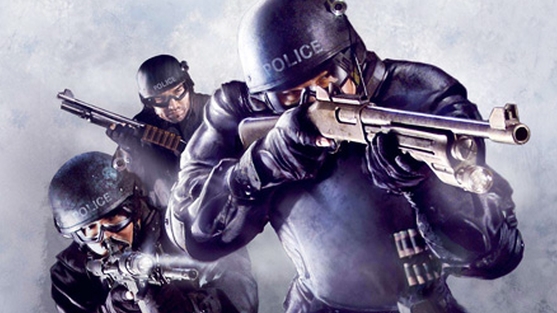
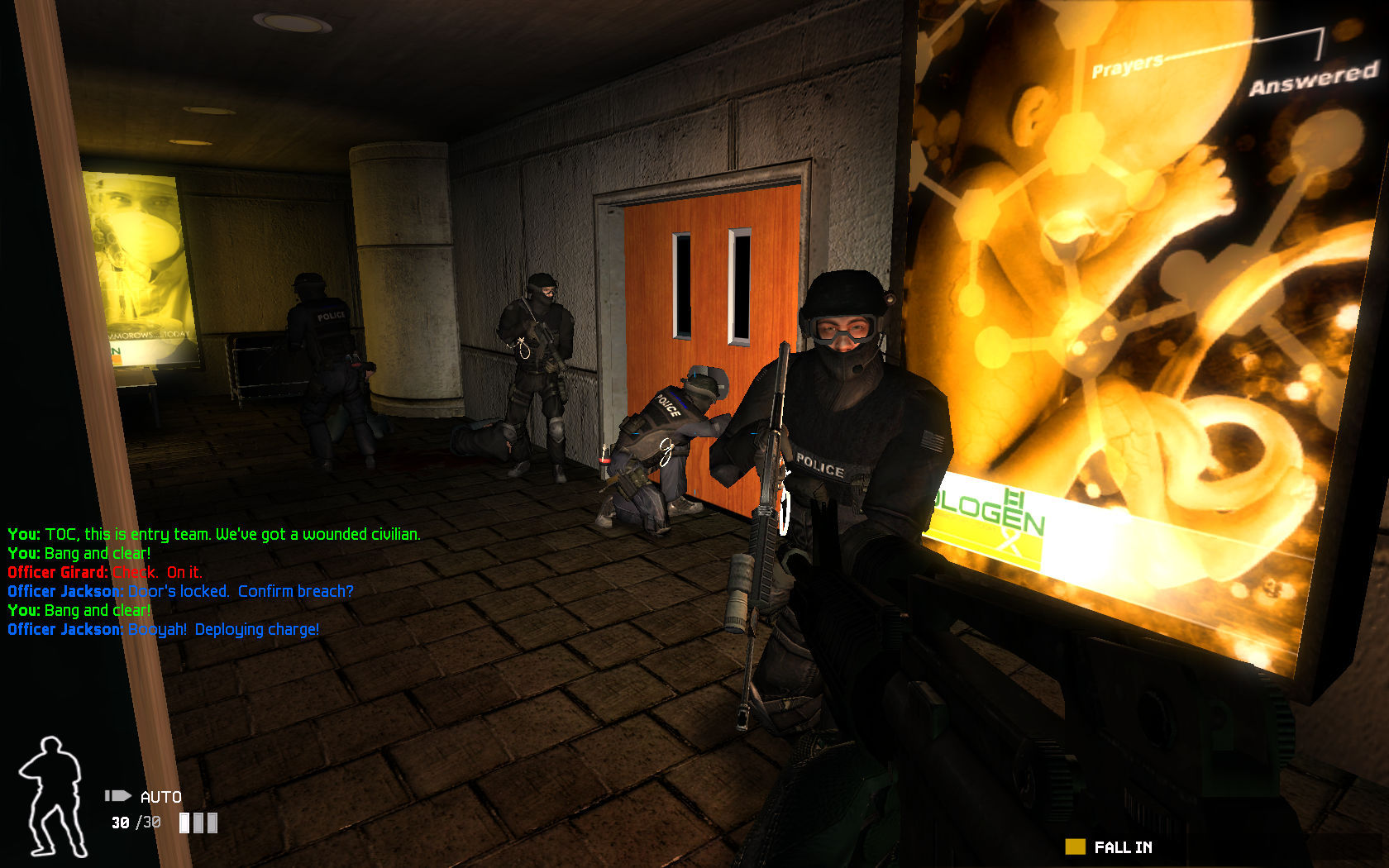
Reinstall invites you to join us in revisiting PC gaming days gone by. Today Andy revisits one of Irrational's best.
Before Irrational dragged us down to the briny deep in BioShock, it took us to the mean streets of fictional East Coast city Fairview. This is the setting for SWAT 4, the tactical first-person shooter the studio developed two years before its underwater epic took critics by storm. SWAT 4 deserves just as much praise, and perhaps isn’t as widely celebrated as it should be.
This oversight is not helped by the fact that, until recently, it was difficult to (legally) acquire digitally. But now the game and its expansion, The Stetchkov Syndicate, are available on GOG. The perfect excuse to revisit Fairview and rain down some justice.
It’s playing as a law-abiding, law-enforcing boy in blue that sets SWAT 4 apart from other tactical shooters such as Rainbow Six. They share similar disciplines, namely formulating and executing a plan to defeat the enemy as efficiently and safely as possible. But being part of (and indeed the commander of) a SWAT team brings a lot of dangerous new challenges to the table. You’re a cop, not a soldier, and it turns out that means you can’t just charge in and murder everyone. You can only fire if someone fires at you, and killing a suspect who was in the process of surrendering is a fast track to a mission failure.
SWAT 4’s point system keeps you in check. Everything you do earns or loses you points. So handcuffing a surrendered suspect will increase your end-of-level score, while killing someone without first determining if they’re a threat will reduce it. On normal difficulty you have to score 50 out of a possible 100 to unlock the next level, which forces you to play and think tactically. And if you kill a hostage, or fail to neutralise a suspect before they do, it’s an instant mission failure. All of these elements combine to create a wonderfully tense game where you always feel on the knife-edge of messing it up.
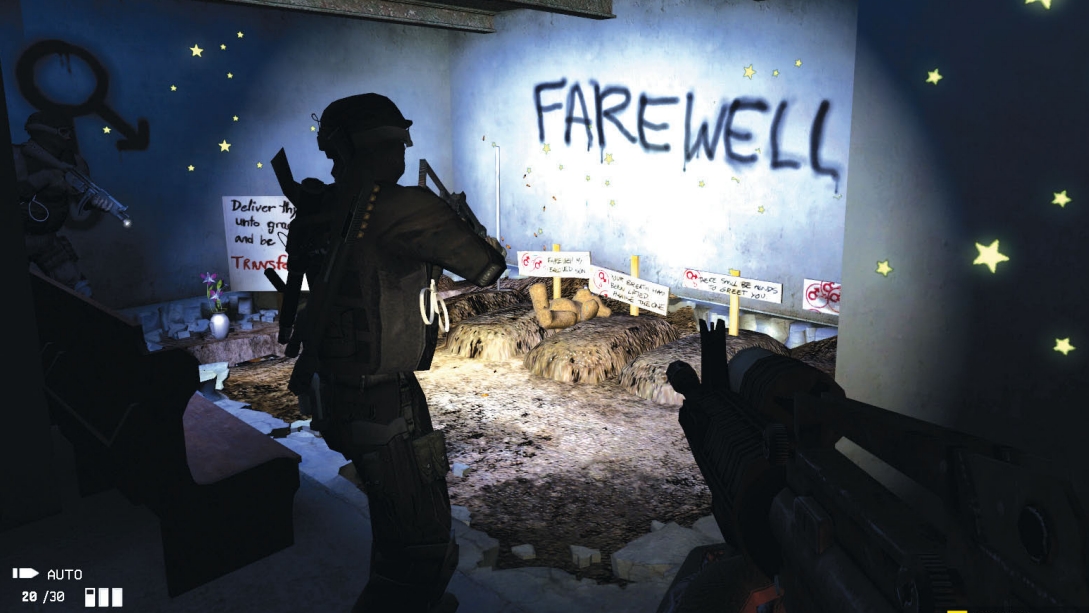
The lack of mid-level saves only adds to this, but each map is relatively small, encouraging repeat plays to master your craft. One of the game’s best features, however, is how the suspect and hostage positions are different every time you start a level, meaning you can’t just memorise where everyone is. This keeps you on your toes constantly, and adds remarkable replay value. I must have played the gas station robbery mission a dozen times, and every time it’s been a completely different experience—because of the randomised suspects and also my growing confidence with the game’s deep systems.
The variety of gadgets and weapons, the richness of the level design, and the fine control you have over your squad makes SWAT 4 a powerful story generator.
The variety of gadgets and weapons, the richness of the level design, and the fine control you have over your squad makes SWAT 4 a powerful story generator. Even something as simple as opening a door and entering a room has multiple layers to it. You can quietly pick the lock or use an explosive charge to blow it off its hinges. You can toss in a variety of non-lethal grenades to incapacitate the suspects, including tear gas and flashbangs. Or you can use your optiwand (basically a high-tech mirror on a stick) to peer inside the room before breaching to determine the threat.
Breaching a room is always a nervous moment. As you enter you hit the middle mouse button to ‘shout compliance’, which means screaming “Police! On your knees! Drop your weapon! Down on the ground!” and other assorted demands. Some perps will comply, especially if you’ve hit them with a taser or a gas grenade. cable tie, then report their position to HQ. Failing to follow these steps will reduce your overall score, so it pays to play it by the book. And as for the suspects who open fire, well, they’ve just signed their own death warrants.
The biggest gaming news, reviews and hardware deals
Keep up to date with the most important stories and the best deals, as picked by the PC Gamer team.
Some of the levels, particularly the rock club filled with trigger-happy warring gangsters, are maze-like warrens of suspects waiting to ambush you. This is when the door wedge gadget comes in handy, letting you control their movement by blocking access to certain doors. Just one of many examples of the strategic thinking that the game encourages and rewards.
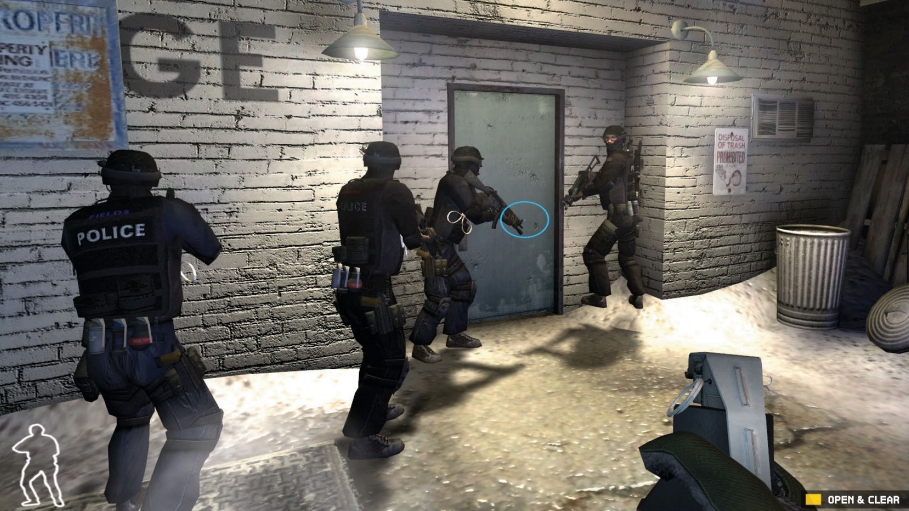
One of my favourite things about SWAT 4 is how each mission is a standalone event, so that there’s no tedious story linking the campaign together. The early missions are, by your average SWAT team’s standards, fairly simple jobs. A few gangsters holed up in a Chinese restaurant. A petrol station robbery gone wrong. Here the suspects are lightly armed and inexperienced, but later you’ll be facing veteran criminals with kevlar vests, gas masks, and automatic weapons. The stakes rise with every mission, from bungled robberies to jewel store heists. And as the suspects get tougher and better-equipped, you have to constantly adapt and experiment with new tactics and gear to outperform them.
After moving carefully through his drab, unremarkable suburban house, you descend into a basement straight out of David Fincher’s Seven.
What’s interesting about returning now is seeing Irrational’s progression towards BioShock in the environment design. This is where the team really started to master using mise-en-scène to tell stories. The Fairfax Residence, widely regarded as one of the game’s best missions, is a great example of this. The owner, a serial killer, has kidnapped a local girl. After moving carefully through his drab, unremarkable suburban house, you descend into a basement straight out of David Fincher’s Seven.
There are bizarre messages scrawled on the walls, creepy masks hanging from the ceiling, newspaper clippings about his killings, and other disturbing imagery. This, along with a sinister, brooding soundtrack, makes for an incredibly atmospheric, nerve-racking mission. And when you finally confront the shotgun-toting killer, there’s a chance he’ll be randomly placed near the kidnapped girl, resulting in a dangerous stand-off. His mother’s in the house too, but won’t comply, so you have to pepper spray and cuff her as she screams “He didn’t do anything!” It’s an incredible piece of level design, and not the kind of thing you usually expect to find in a tactical FPS.
The Stetchkov Syndicate was released a year later, and adds seven new missions. It’s a great expansion, and there’s a noticeable increase in graphical fidelity. The environment design is even more detailed than in the main game, although nothing quite matches the eerie brilliance of the Fairfax house. The expansion adds new weapons and new suspect behaviour, which includes suspects being able to pick up weapons after they’ve surrendered and dropped them, should you turn your back and fail to cuff them. The ‘gold’ edition on GOG comes bundled with this, giving you many hours of quality policing.
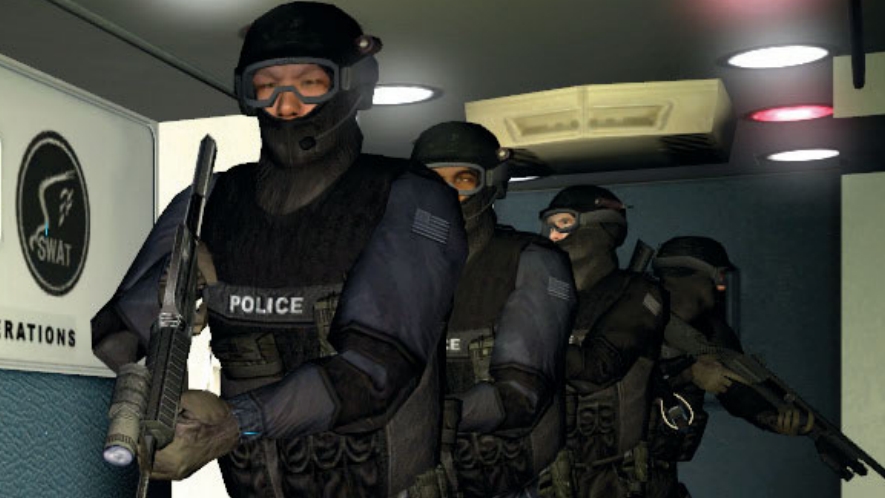
SWAT 4 holds up, and I feel comfortable saying that because this ‘reinstall’ is really my first time playing it. My hopeless old PC couldn’t handle it back in 2005, so I approached this playthrough with some caution. I’d heard a lot of good things about SWAT 4, but wondered if it was just blinkered nostalgia. People still get fairly misty-eyed over it, but not to the extent of some other classic games. And some of the most revered PC games are, honestly, a bit rubbish today.
So it was a joy to discover that it’s a genuinely great game, and one of Irrational’s finest moments as a developer. And it’s worth returning to as a reminder of that period in the late ’90s and early ’00s when tactical shooters were at their peak on PC—a genre that has sadly faded away in recent years. They could take the systems from this game and transplant them directly into a new engine and it would totally work. BioShock is Irrational’s all-time classic, of course, but from now on I’ll regard SWAT 4 with just as much reverence. I don’t know who owns the rights to the series now, but it’s time for a revival.
If it’s set in space, Andy will probably write about it. He loves sci-fi, adventure games, taking screenshots, Twin Peaks, weird sims, Alien: Isolation, and anything with a good story.


